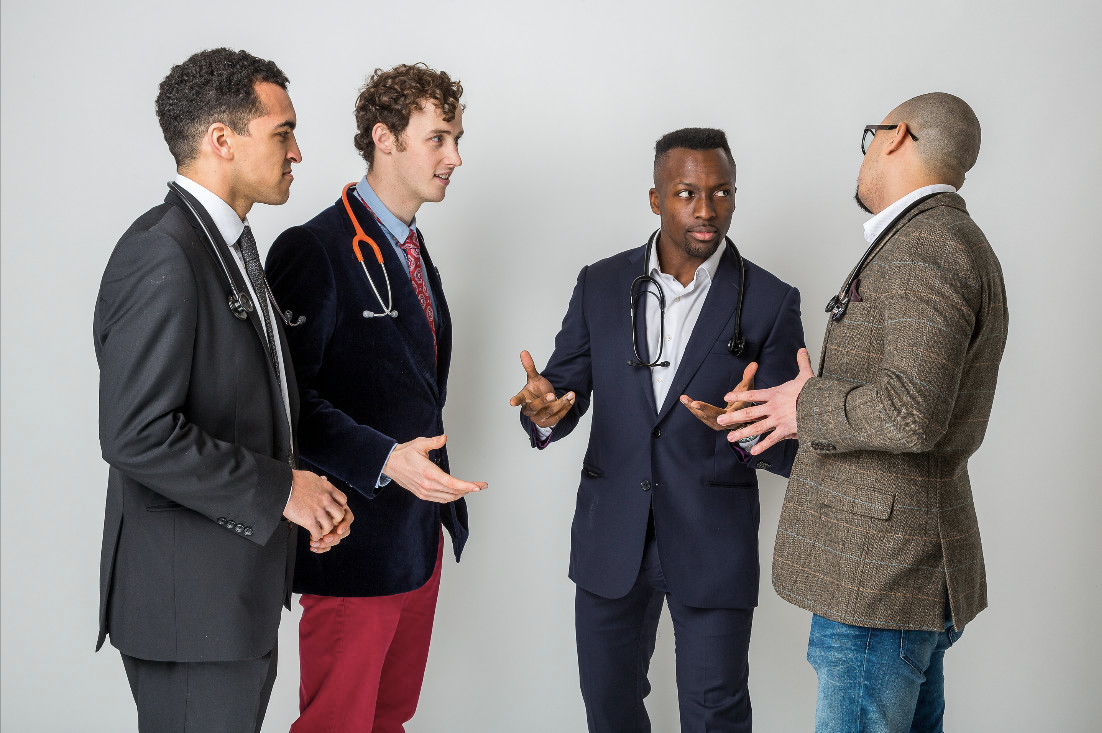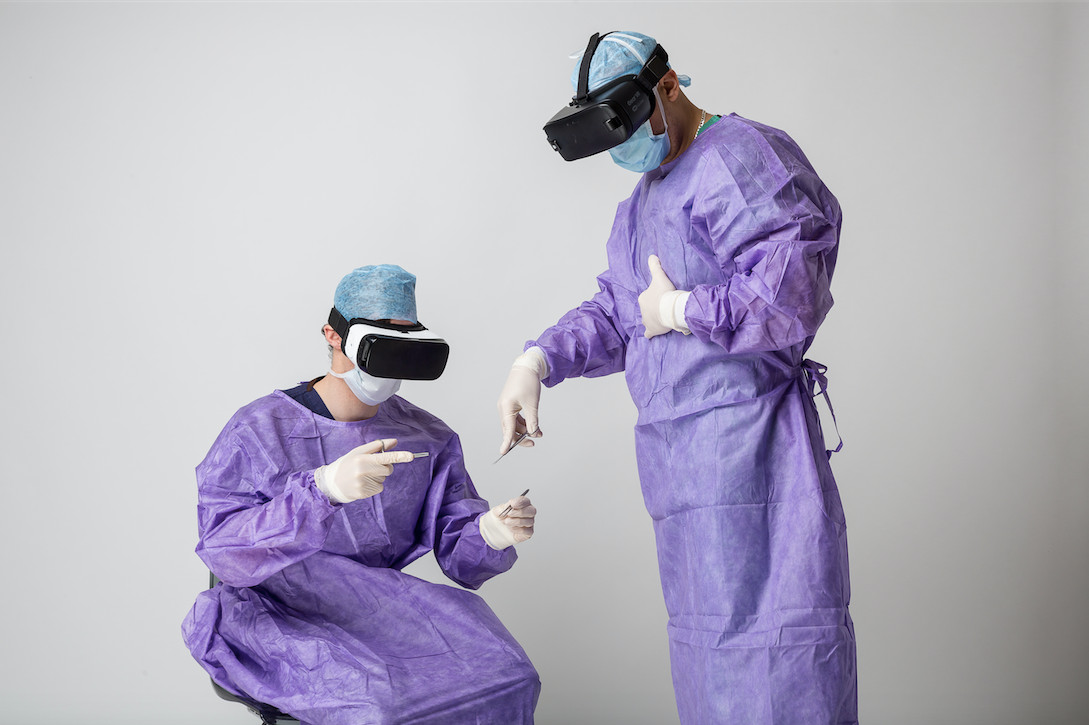The Design Fundamentals For Effective VR Learning
The fundamentals and design necessary to make effective VR learning and education applications
Feb 17th, 2017 BY DR RAPHAEL OLAIYA
In the 2nd instalment of feature series Dr. Raphael Olaiya, a doctor and medical education academic, who works with the NHS on virtual reality (VR) immersive training programmes for doctors and nurses. Discusses the fundamentals and design necessary to make effective VR learning and education applications. You can contact Dr Raphael Olaiya at raphael.olaiya@nhs.net.
Winning and being elected by a unanimous decision, the education and learning sector is the chosen one. It was the pilot study for Virtual Reality technology application to industries outside gaming, it's the cause for acceleration and mass global investment wider than just for gaming. Before we all get too excited and spoil the potential revolutionary fruits of education and learning in VR. Education and learning is an industry older than technology itself, not to mention that VR is just in its 30th decade , and despite this the recommended gold standard approach, paradigm and fundamentals for education and learning are still significantly up for debate so the question is what is the best way to apply VR to education?
The Question is: What is the best way to apply VR to education?

Utterly amazing that the art of optimising education & learning which is the basis of all knowledge transfer since the beginning of humankind is still yet to be concretely define. The answer to this lies in the fact that it is most certainly a blend of science and ART: flexible and dynamic just like the human experience itself which is as individualistic as the way we are physically formed. As a medical doctor, a published medical education academic author and a creative I have seen how rigorous stimulation of the creative muscle can complement seemingly uncreative fields. It doesn’t take a quote from Einstein on creativity to believe this!
“It is most certainly a blend of science and ART: flexible and dynamic just like the human experience itself which is as individualistic as the way we are physically formed”

Image courtesy of Medigage Ltd- Lifelike VR clinical simulation training
To optimise application of VR to learning and education we need to be methodical, scientific with a creative spark (I look forward to explaining this later).
The wide education and learning industry (not just medical) is perceived by the tech community as a secure and powerful global adoption force for VR tech, taking the baton and going centre stage to push the growth of virtual reality further into the living rooms and classrooms.
Since 2015 tech juggernauts Google, Microsoft and dozens of well-funded VR start-ups funnel millions into educational and learning VR business development, every step of the ladder from primary school education all the way to post-graduate learning and vocational simulation training.
We all agree on some clear obvious factors that make VR a superior learning medium than most traditional methods, broadly speaking.
- Increased Engagement
- Increased recall and retention
- Less distractions
However speaking broadly about VR for learning and being non-meticulous is the trap, it will lead to sub-optimal VR learning and education applications that depend on the wow innovation factor of VR instead of measuring the learning products by how effectively they further optimise the transfer of knowledge and skill!
Speaking broadly about VR for learning and being non meticulous is the TRAP
The opportunity with VR for learning is too great to be dampened by unneeded sub-optimization driven by hastiness to market products. Why settle for sub-optimal especially when the developmental processes to create optimal education resources has already been defined.

Design thinking: A popular concept in silicon-valley/start-up communities, architects, UX designers and physical product designer.
A human user–centered development process to VR application development,that draws upon evidence supported systematic reasoning and creativity to explore horizontal design possibilities through utilising the technological advancements of which the innovation is based to then create further benefits to the user than current solutions.
To further explain this and give it pragmatic context:
- What degree of interactivity is useful
- What degree of simulation of physical presence is useful
- UX and User journey
- 3As Accessibility, affordability, acceptability
- How to personalise to suit individual user’s learning styles and preferences
- Intended use of knowledge or skill after learning has taken place
- When considering the VR learning solution as options what does the user compare it to
- The content (complexity, type, length )
- Human user-centered approach: identify the priorities for the user and focus on optimal delivery through VR:
- Evidence supported reasoning: Address the user priorities by using what evidence and experience suggests not just logic alone. Freely available academia research online often sheds objective light on seemingly difficult design questions. And if academic research comes close to help your decide on design features then your own primary research is best.
- Creatively explore obvious and hidden learning dynamics exposed by the new technology
- Don’t be paralysed by the degree of open creative options when designing learning programs through VR instead, see this as the advantage to tread new ground for better or for worse. It may be useless or it could lead to the discovery of a disruptive revolutionary learning dynamic.
- Throughout focus on the end goal of furthering user benefits and preferences
- Don’t get caught up in design for design sake, ensure all cannons points towards to target.
Optimising the learning process itself : The Constructivist approach;
The most important user priority is of course the content delivery so this needs to be addressed early on in the design process. Whether or not the VR user/learner journey design compliment the learning theory underpinning the content delivery will dictate whether the user ultimately likes it, so its very important. The current dominant theory for how things should be taught to optimise learning is the constructivism theory of learning coined by Robert Gagne an academic educational psychology pioneer in the 70s. The constructivist theory explains how people may acquire knowledge and skill it says;
Each of us as individuals experience every sensory stimulant differently and then construct our own understanding and knowledge of the world through reflecting on those experiences and external and internal feedback loops. When we encounter something new, we have to reconcile it with our previous ideas and experience, maybe changing what we believe, or maybe discarding the new information as irrelevant. In any case, we are active creators of our own knowledge. Our individual constructed worlds can be vastly different but the constraints of linguistics and our thirst for objectivity gives us the impression that we seem to share an equal internal learning world which is largely false.
So how do we exploit this for the betterment of Learning and education resources?
By building a platform that creates a dynamic that’s lends itself to giving knowledge construction ownership to the learner themselves. Empowerment and entrustment are key, learning is organic and only poor learning resources try to force rigid blueprint for knowledge and skills onto learners learning pathways. Nonetheless, too much learning freedom can be paralysing and give ambiguity of where to start constructing our learning a fine balance is needed.
“Lends itself to giving knowledge construction ownership to the learner themselves.”
“Nonetheless too much learning freedom can be paralysing and give ambiguity”
The more rigid the learning blueprint the stronger the analytical and problem solving mental faculty needed in to deconstruct the fixed information chunks and convert to be received by the one’s unique learning pathways.
Take for example: Remember using multiple books, videos and asking different people to research the exact same topic this is because you were looking for the one that fits your learning pathway most snugly.
Factors that increase a learning systems ability to give knowledge construction ownership to the learner include:
- Exploration
- Immersion
- Immediate feedback
- Ability to rewind, repeat and skip at will
- Customizability of content delivery that suits learner’s learning style
- Hands-on practice and experimentation
- Embarrassment and risk-free practice
- Gamification
- Visible tracking of progress and achievement
- Increasing difficulty on progress
- Convincing the user why the content is important for them to learn
- On demand option for social collaboration in reaching learning or creation objectives
Finally, virtual and augmented reality gives us the perfect platform to facilitate an amalgamation of these factors.
Each one of these factors requires technical expertise and experience to implement correctly and also the optimal combination selection is important not all factors are appropriate for each learning program.

Ordering the content delivery is in essence an important part of the UX or UJ (user experience or user journey) and is a priority in VR educational design. The expertise comes into play when balancing freedom of exploration of learning and ordered step by step learning. Robert Gagne published the Gagne 9 steps of instruction a step-by-step guideline for learning programs to present comprehensive and successful learning experiences. Each step is designed to be placed in the prime position to help learners understand and retain information effectively.
Gagne’s nine levels of learning provide a checklist:

Although Gagne’s model is different from other popular training models, you can still combine it with other models. A good example is 4mat method that helps you to structure your approach so that people with different learning styles will learn just as effectively as everyone else.
The ARCS model works well with Gagne’s model, it focusing on motivation and ensuring that learners understand the benefits of the content.
The last puzzle piece: Creativity
A seemingly objective brick on brick topic: the dogma of learning and education can innately shun using creativity to explore new opportunities for better learning experiences. We must indeed remember creativity is a fundamental of learning and education and especially for VR where the experience boundaries are even yet to be defined. There are no VR education and learning experts only those daring enough to blend systematic scientific approach with boundless creativity.
Written & Published by Dr Raphael Olaiya MBCHB
